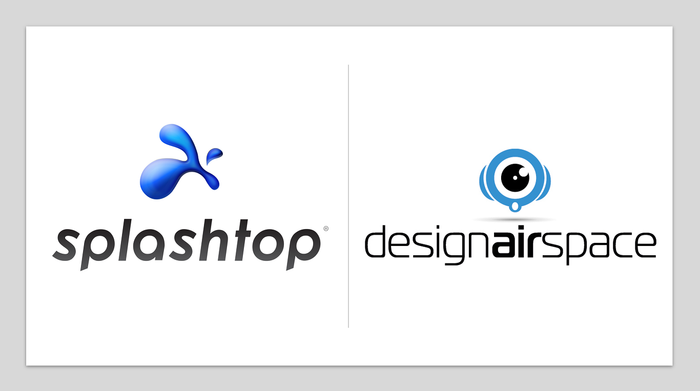Designair partners with Splashtop to deliver better performance to remote designers

Februar, 26 2022 - Nürnberg, Germany, and Amsterdam - For immediate release
Designair, the leading virtual desktop-as-a-service provider for CAD and BIM designers, today announced a new partnership with Splashtop, a global leader in secure remote access and support software. Through the partnership, Designair customers will now use Splashtop’s client to access its virtual desktops, which will deliver better performance and improved security when working on large architecture and engineering files in the cloud.
A growing number of engineers, designers and architects are using cloud environments to work on large, complex design files and to run CAD and BIM software. The cloud enables them to use any internet-connected computer, then remotely use Designair’s powerful cloud environment to run their software and edit large files over the internet.
To connect to the remote desktop, Designair previously used a generic remote desktop client that allowed customers to access its cloud environment. However, by choosing to partner with Splashtop, end users will now have an even better performance when editing large files online.
Splashtop is the industry reference for secure remote desktop client software. It is already used widely in both the media and architecture and engineering industry due to its ability to provide a smooth remote editing experience. Splashtop delivers a powerful engine and up to 60 frames per second, which will make the experience of editing large files remotely significantly better for Designair’s customers.
Besides an improved experience for remote access, Splashtop also provides high security, including TLS encryption, user authentication on each device, and one-click sign in. This will make the experience of logging into files that users are editing in Designair quicker and easier than ever.
Designair also announced that its customers would not see this technological improvement reflected in their monthly subscriptions – the cost of using Designair will remain the same.
A spokesperson for Designair said:
“We are continually working to ensure our end users have the smoothest possible experience. When they are working away from the office, architects, designers and engineers want their remote desktops to be just as fast and responsive as traditional machines. By partnering with Splashtop, our end users will find it quicker and easier to edit big files remotely”.
A Splashtop spokesperson added:
About Designair“We are very pleased to partner with Designair and further increase our support for design, engineering and architecture professionals who are looking to work remotely.”
Designair was launched in 2017 in response to the growing demand for cloud-based CAD software. Their high-end Virtual Desktops with graphics power frees designers from their desks, and allows product development teams, hardware designers, architecture firms and engineering & construction companies – in both start-ups and established businesses - to work remotely and use high quality virtual desktops that are paid for on a monthly basis.
About SplashtopHeadquartered in Silicon Valley and Amsterdam, Splashtop is the leader in Secure Remote Access and Support, delivering an in-person experience users need with security IT can trust. Unlike clunky and slow remote access solutions, Splashtop’s in-person experience is as fast, simple and secure as being in front of the on-site machine. Our 4k quality at 60fps with enterprise-grade reliability and scalability sets the standard for performance. Splashtop streamlines access and support for Windows, Mac, Linux, iOS and Android in a single application. With two-factor authentication and single sign-on built-in, as well as SOC2, GDPR, CCPA and HIPAA compliance provides trusted security. Splashtop’s instant global support allows users to talk directly to an expert, regardless of company size. Learn more at www.splashtop.com.

